
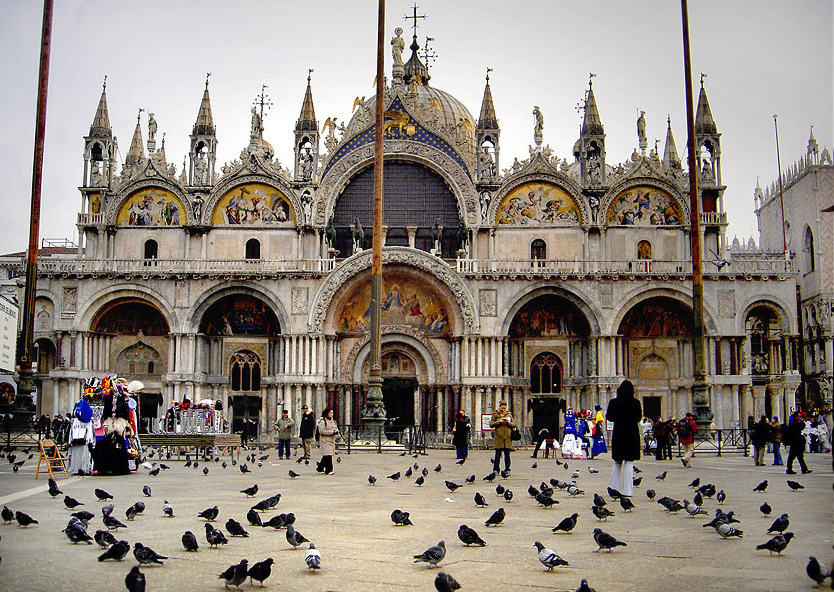


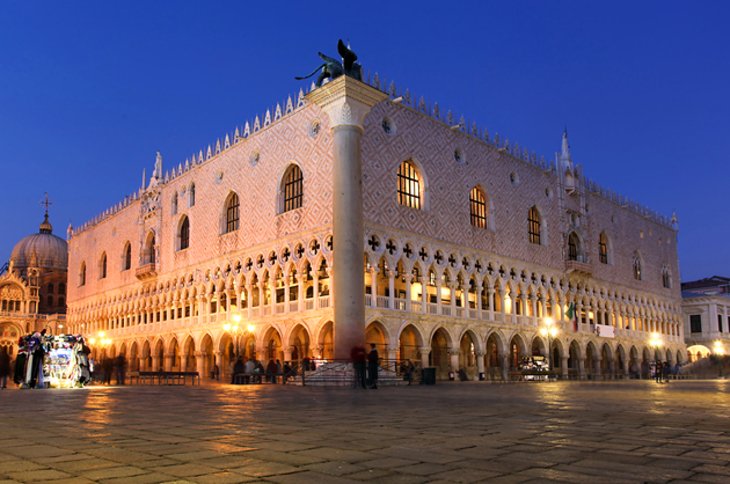
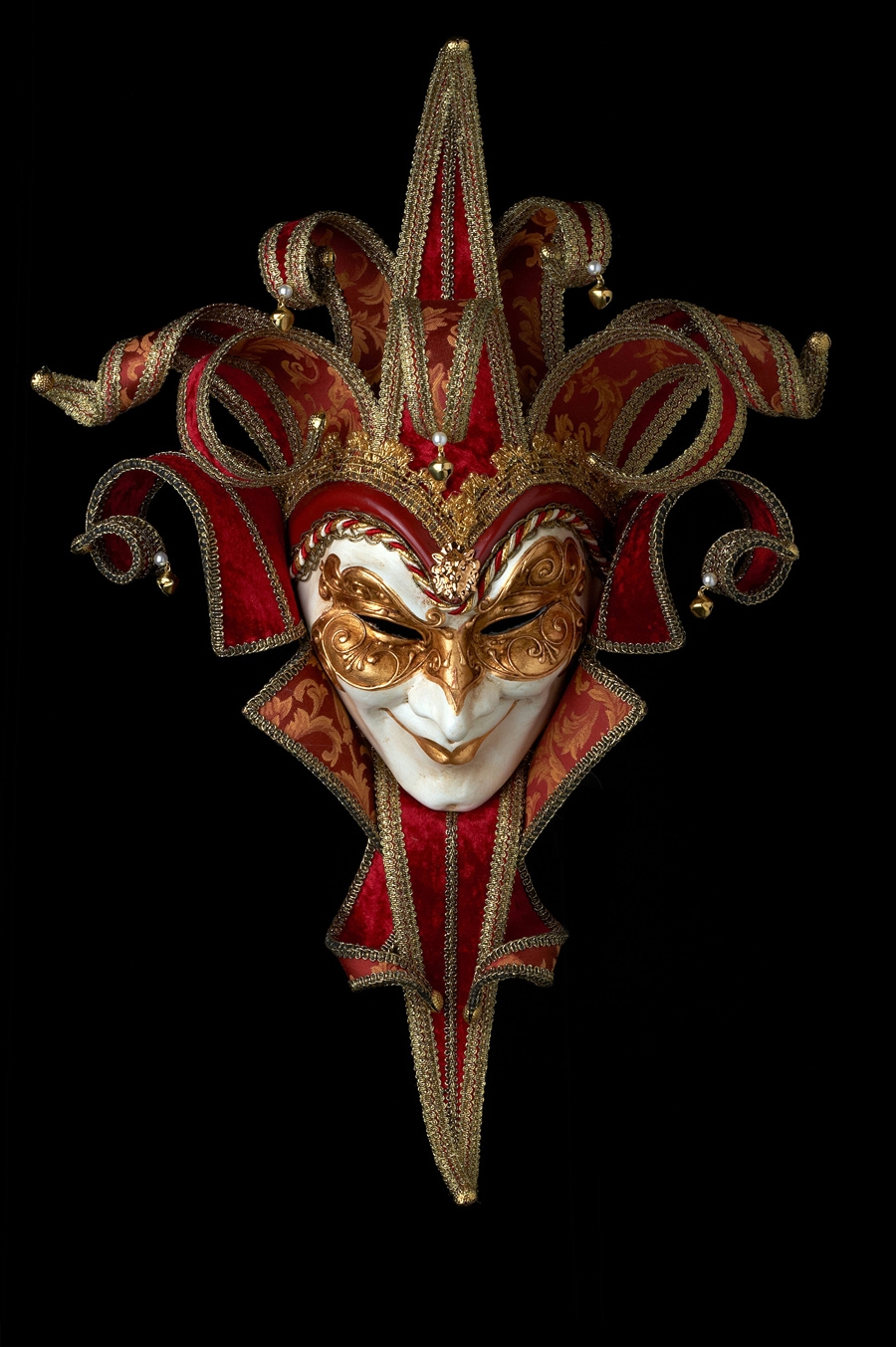
Venetian masks are a centuries-old tradition of Venice, Italy. The masks are typically worn during the Carnival (Carnival of Venice), but have been used on many other occasions in the past, usually as a device for hiding the wearer's identity and social status.
Venetian masks have a long history of protecting their wearer's identity during promiscuous or decadent activities. Made for centuries in Venice, these distinctive masks were formed from paper-mache and wildly decorated with fur, fabric, gems, or feathers. Eventually, Venetian masks re-emerged as the emblem of Carnevale (Venetian Carnival), a pageant and street fair celebrating hedonism.
Venetian masks have been worn in Venice, Italy, since antiquity. Unlike the vast majority of their counterparts in contemporary European nations, each citizen in Venice enjoyed a high standard of living. Everyone was part of the great economic machine that was the Republic. Venice was capitalizing on its position, on its gains, long before its contemporaries had realized the value of a market economy. With a level of social wealth unequaled since, the citizens of Venice developed a unique culture—one in which the concealing of the identity in daily life became paramount to daily activity. Part of the secrecy was pragmatic: there were things to do, people to see, and perhaps you might not want others to know what deals you were cutting. After all, the city is relatively small.
Additionally, the masks served an important social purpose of keeping every citizen on an equal playing field. Masked, a servant could be mistaken for a nobleman—or vice versa. State inquisitors and spies could question citizens without fear of their true identity being discovered (and citizens could answer without fear of retribution). The morale of the people was maintained through the use of masks—for with no faces, everyone had voices.
As a result of the concealment of identity, however, people naturally found themselves taking advantage of the situation. The society grew ever more decadent. The immense amount of travelers coming through the city meant that sexual promiscuity was commonplace and acceptable. Gambling went on all day and night in the streets and houses, even in convents. Women's clothing became more revealing; homosexuality, while publicly condemned, was embraced by the populace. Even the nuns and monks of the clergy, bejeweled and dressed in the latest imported creations, wore masks and engaged in the same acts as the majority of their fellow citizens. Rome turned a blind eye, as long as the Republic continued to make generous donations.
The Republic fell into a state of luxury, indolence, and moral decay. Eventually the wearing of masks in daily life was banned and limited only to certain months of the year. During the last year of the Republic's existence, this period extended for over three months from December 26. After the 1100s, the masquerade went through periods of being outlawed by the Catholic Church, especially during holy days. Their policy leads to eventual acceptance when they declared the months between Christmas and Shrove Tuesday free for Venetian mask - attired decadence. This period evolved into Carnival, the pre-Lent celebration meaning, "remove meat." Although Venetian Carnival lost popularity as Venice's cultural production faltered during the Enlightenment, it was officially reintroduced in 1979.
The modern celebration of Venetian Carnival has reinvigorated the art and craft of making Venetian masks. Recognizable types of Venetian masks continue to dazzle tourists, dancers, and pageant participants during Carnival and year round. Wearing Venetian masks has spread to Halloween masquerade balls and what North and South Americans call Mardi Gras, but they always carry their rich Italian history.
*Go to http://magicofvenezia.com/history-of-venetian-masks/ for more information*
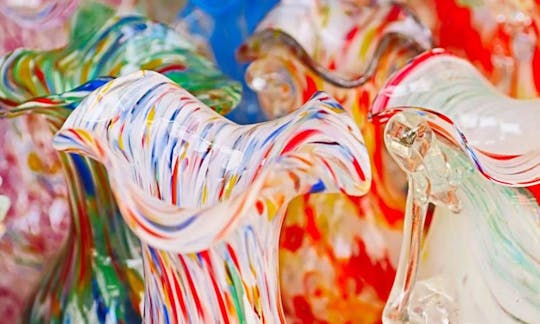
The origins of glassmaking in Venice go back to the times of the Roman Empire when molded glass was used for illumination in bathhouses. Blending Roman experience with the skills learned from the Byzantine Empire and trade with the Orient, Venice emerged as a prominent glass-manufacturing center as early as the 8th century. One of the earliest furnaces for glass on a Venetian island, dating from the 8th century, was discovered by archaeologists in 1960.
By the late 1200s, the production of glass objects of the finest quality was the city’s major industry as confirmed by the establishment of the Glassmakers Guild that laid out rules and regulations for the craftsmen. The purpose of the guild was to safeguard the secrets of the trade and ensure the profitability of the industry. In line with these objectives, a 1271 law prohibited the importation of foreign glass or the employment of foreign glassworkers.
An even more radical law was passed in 1291 that laid the ground for the establishment of Murano as a premier glass-manufacturing center. This law required that all furnaces used for glassmaking be moved from Venice to Murano to avoid the risk of fire from the furnaces spreading onto the largely wooden structures of overpopulated Venice. Many historians agree that the true motive for this law was to isolate the glass craftsmen to a location where they wouldn’t be able to disclose trade secrets. A subsequent law passed in 1295 forbidding the glassmakers from leaving the city confirms this theory.
Artisans working in the glass trade were well rewarded for their efforts. They had a privileged social status, and their daughters were allowed to marry into the wealthiest and noblest of Venetian families. By applying this clever approach, Venetian government ensured that the glassmakers encouraged their offspring to carry on the trade, and that trade secrets stayed in the families and fueled creative processes leading to innovation and further success. This, along with Venice’s convenient location at the crossroads of trade between East and West, gave Venice monopoly power in manufacturing and selling quality glass throughout Europe that lasted for centuries.

The architecture of cathedrals, basilicas and abbey churches is characterised by the buildings' large scale and follows one of several branching traditions of form, function and style that all ultimately derive from the Early Christian architectural traditions established in the Constantinian period.
The history of Venice begins around 400 A.D. The first people to settle in the Venetian Lagoon were frightened men coming form the nearby Italian mainland. For centuries these people had enjoyed prosperous lives in a chain of splendid cities of the Roman Empire strung along the north-eastern shores of the Adriatic.
But, in the early years of the fifth century with the collapse of the Roman Empire and barbarians sweeping down from northern Europe, their communities were thrown into chaos. The populations of these towns fled before the Goths, seeking a refuge where their enemies could not follow them. And so, the history of Venice began.
As further waves of invaders swept across the mainland, more and more people sought sanctuary in the channels and shoals of the lagoon. Although, as each wave of invaders passed, so people would return to the mainland to try to resume their own lives.
According to tradition, Venice formally came into existence at the stroke of noon on the 25th March, 421 A.D. But, it wasn't until around 450 A.D. that large numbers of people decided to settle permanently in the lagoon.
The arrival of Attila the Hun, and the devastation his forces caused on the mainland were enough to help the inhabitants finally realize that to try to continue to live on the mainland was no longer possible. In fact, many of the refugees found their new lives in the lagoon more congenial than they had expected.
Living in a refuge that was both uneviable and inaccessible; where there enemies lacking both ships and a knowledge of sea could not follow; the geographical isolation of these early Venetians enabled them to enjoy an indepedence from the successive upheavals by which Italy was now being shaken.
Early Venetians lived like sea birds, their land secured only by osier and wattle. The one great wealth that the Venetians enjoyed was the fish and salt from the lagoon, which gave them the power to purchase those things that they did not possess.
For nearly 1400 years, the two or three miles of shallow water separating Venice from mainland Italy, had not only protected Venice from invaders but effectively isolated the Venetians from the Italian political life.
Untouched by the papalist and imperialist warfare, feudalism and territorial squabbles; they fixed there attention towards the East and the rich markets of the Levantine and Constantinople. And so began the great mercantile empire of the Venetian Republic.
A city built from fear, was soon to be heralded as the most dazzlingly beautiful city in the world. While the Florentines were regarded as great thinkers, the Venetians should be regarded as great doer's. For they alone conquered the malaria-ridden swamps to build a city from nothing.
The architectural and artistic treasures to be found throughout the city of Venice, reflect a continual process of enrichment through which the Venetians showed their great sense of nationalism at a time when the rest of Europe was in chaos.
Modern day Venice is still an intriguing and mystifying city to visit. Its great history seems to reasonant throughout the whole city. Traditions and festivals continue throughout the calendar year marking events from the rich history of Venice, the Queen of the Sea.
*Go to https://www.tours-italy.com/discover-your-italy/venice-travel-guide/history for more details*
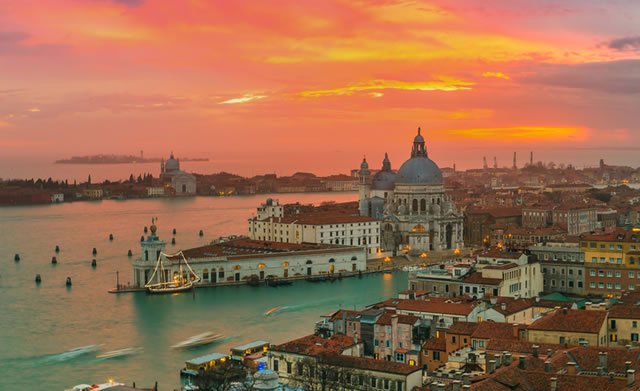
Venice is along the coast of Italy, which made it a major power in the medieval and early modern world due to its key location for trade routes from the east to Europe. Its location by the Adriatic sea gives it a slightly tempered climate.